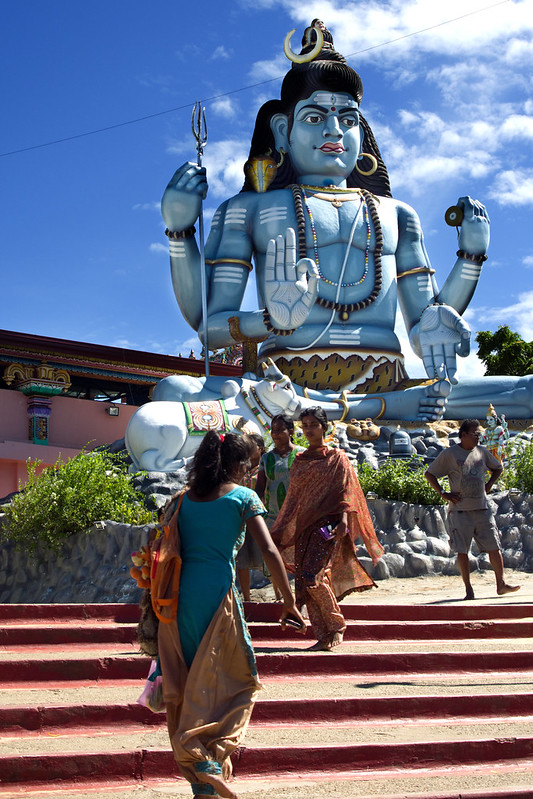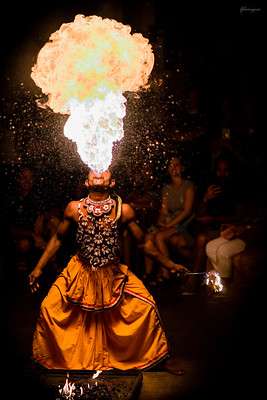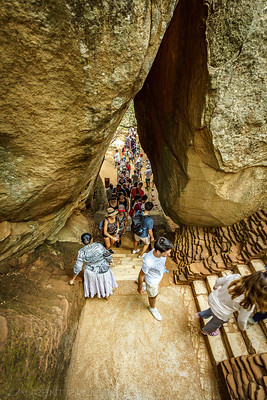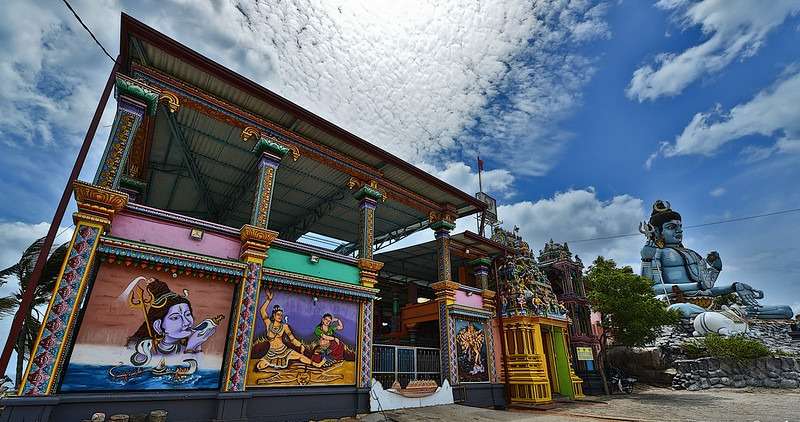Koneswaram Temple - SRI LANKA
Perched majestically atop Swami Rock overlooking the sparkling waters of the Indian Ocean, the Koneswaram Temple of Trincomalee stands as a testament to Sri Lanka’s rich cultural heritage and religious significance. Nestled on the northeastern coast of the island, this ancient Hindu temple holds a revered place in the hearts of devotees and captures the imagination of visitors with its breathtaking beauty, spiritual aura, and historical significance. The Koneswaram Temple, also known as the Thirukoneswaram Kovil, is a treasure trove of spirituality, history, and architectural splendor.

The temple’s roots can be traced back over two thousand years, with its origins intertwined with the ancient legends and mythologies of Sri Lanka. According to Hindu mythology, Lord Shiva, one of the principal deities of the Hindu pantheon, manifested himself as a powerful lingam, or a symbolic representation of divine energy, on Swami Rock. This sacred site, believed to be the place where Lord Shiva’s energy touched the earth, became the nucleus of the Koneswaram Temple.

As visitors ascend the stone steps leading to the temple, they are enveloped by an air of mystique and spiritual energy. The grand entrance, adorned with intricate carvings and colorful statues, opens the door to a world of devotion and reverence. The temple’s architecture showcases a seamless blend of Dravidian, Pallava, and Chola styles, reflecting the historical influences that shaped the region. Intricate sculptures, vibrant frescoes, and detailed stonework adorn the temple’s walls, telling stories of gods, goddesses, and mythical creatures.
Inside the temple complex, the main shrine houses the sacred lingam, the focal point of worship for devotees. The air is thick with the fragrance of incense and the soft sounds of devotional chants. The sanctum is adorned with flowers, garlands, and offerings, creating a vibrant tapestry of color and devotion. As visitors witness the fervor and reverence of the devotees, they gain a deeper appreciation for the spiritual significance that the Koneswaram Temple holds in their lives.

The temple’s significance transcends religious boundaries, attracting visitors from all walks of life who are drawn to its aura of spirituality and historical grandeur. The panoramic views from the temple premises offer a breathtaking vista of the Trincomalee Bay, with its azure waters stretching as far as the eye can see. It is said that the temple’s location was carefully chosen to harness the natural energy and create a spiritual sanctuary that connects the divine with the earthly realm.

Apart from its religious and architectural significance, the Koneswaram Temple also bears witness to the region’s tumultuous past. Over the centuries, the temple has faced destruction and restoration, a testament to its enduring resilience. The temple was partially destroyed during the colonial era and later reconstructed, representing a triumph of cultural heritage against the tides of time. Today, it stands as a symbol of Sri Lanka’s rich past and the indomitable spirit of its people.
Exploring the temple complex further, visitors will discover various shrines dedicated to different deities, each with its own unique charm and significance. The shrine of Goddess Parvati, the consort of Lord Shiva, offers a serene space for contemplation and worship. The temple also features shrines dedicated to other Hindu deities, such as Lord Ganesha, the elephant-headed god of wisdom, and Lord Murugan, the god of war and victory. These additional shrines enhance the spiritual tapestry of the temple, providing devotees with a diverse range of sacred spaces to offer their prayers and seek blessings.























